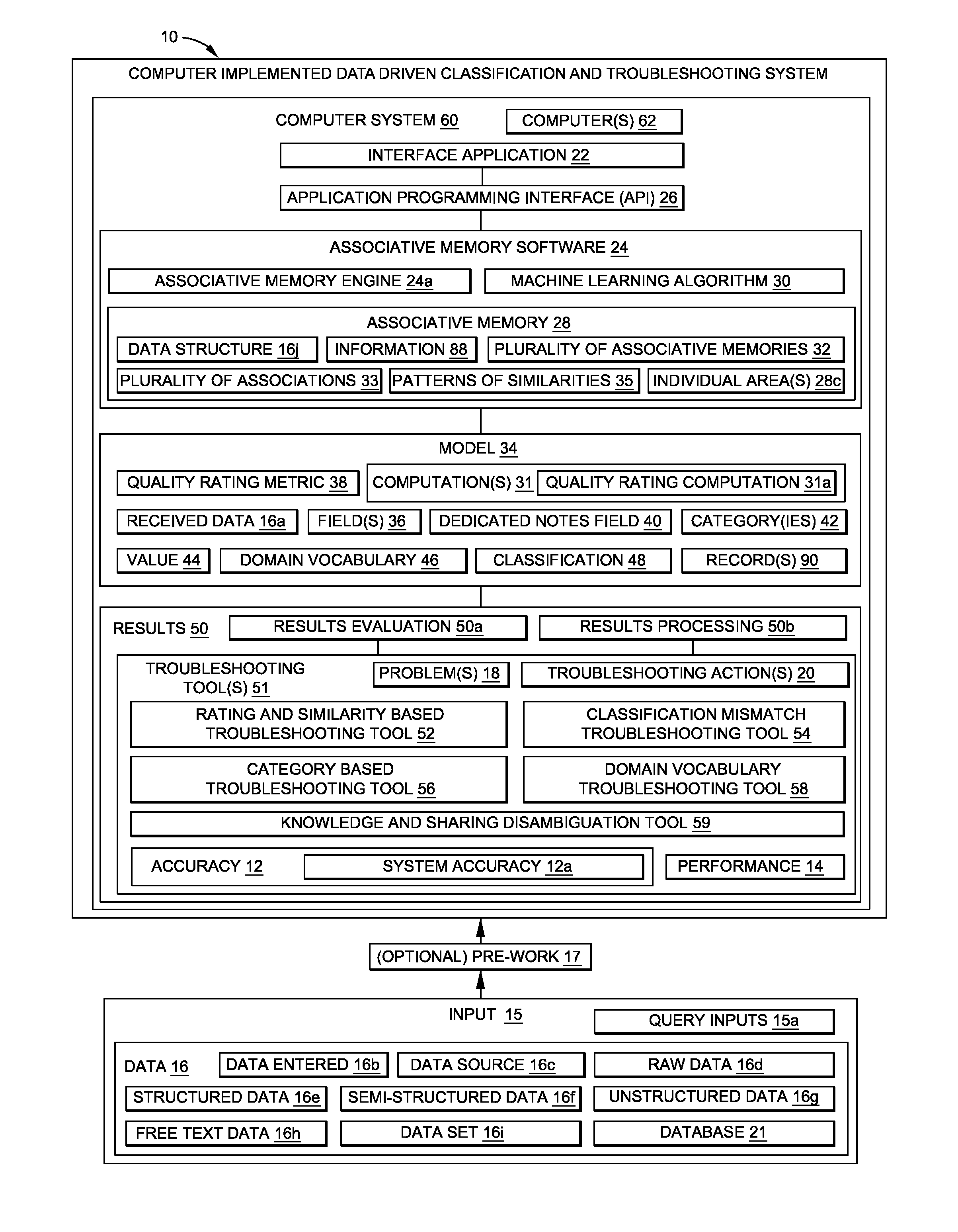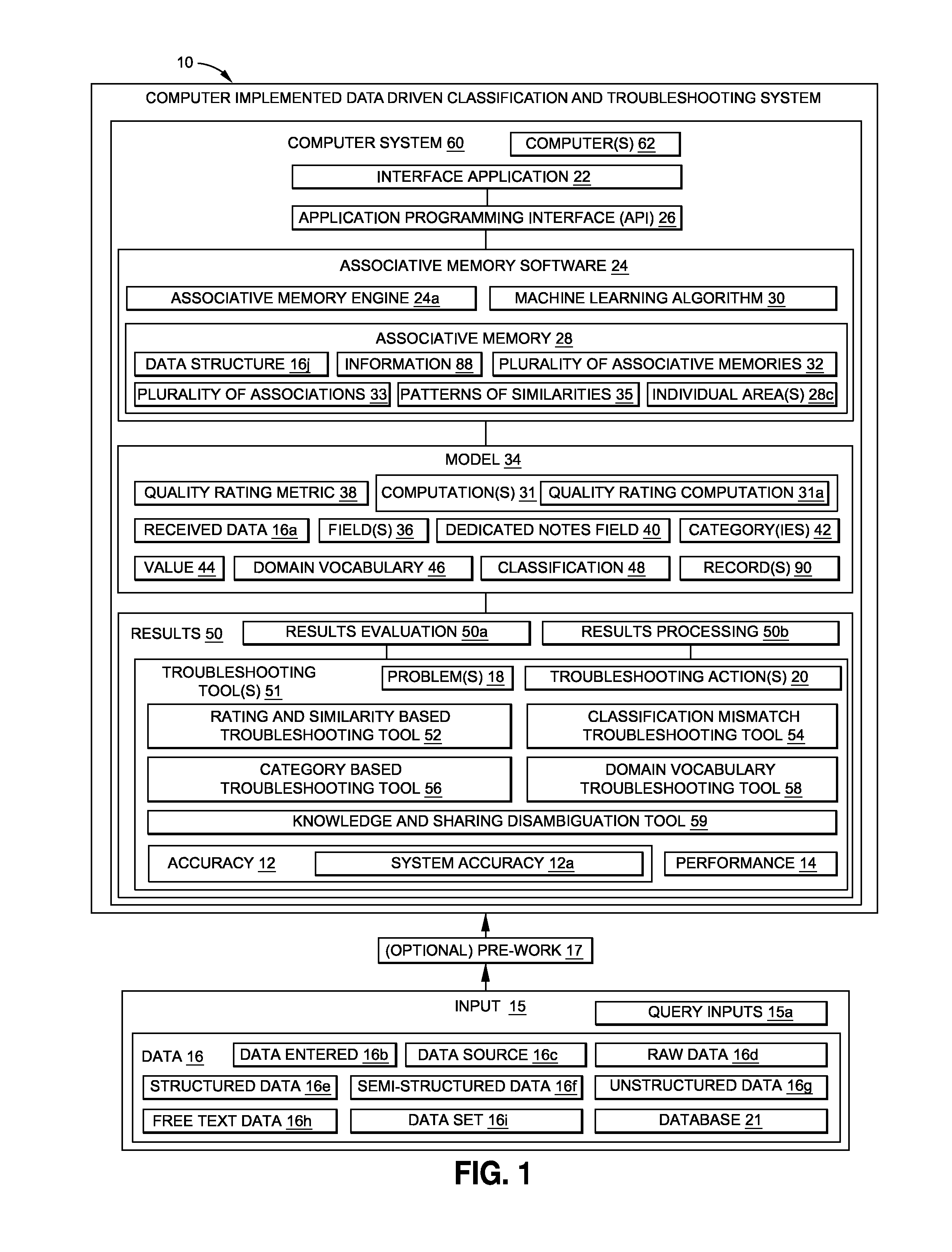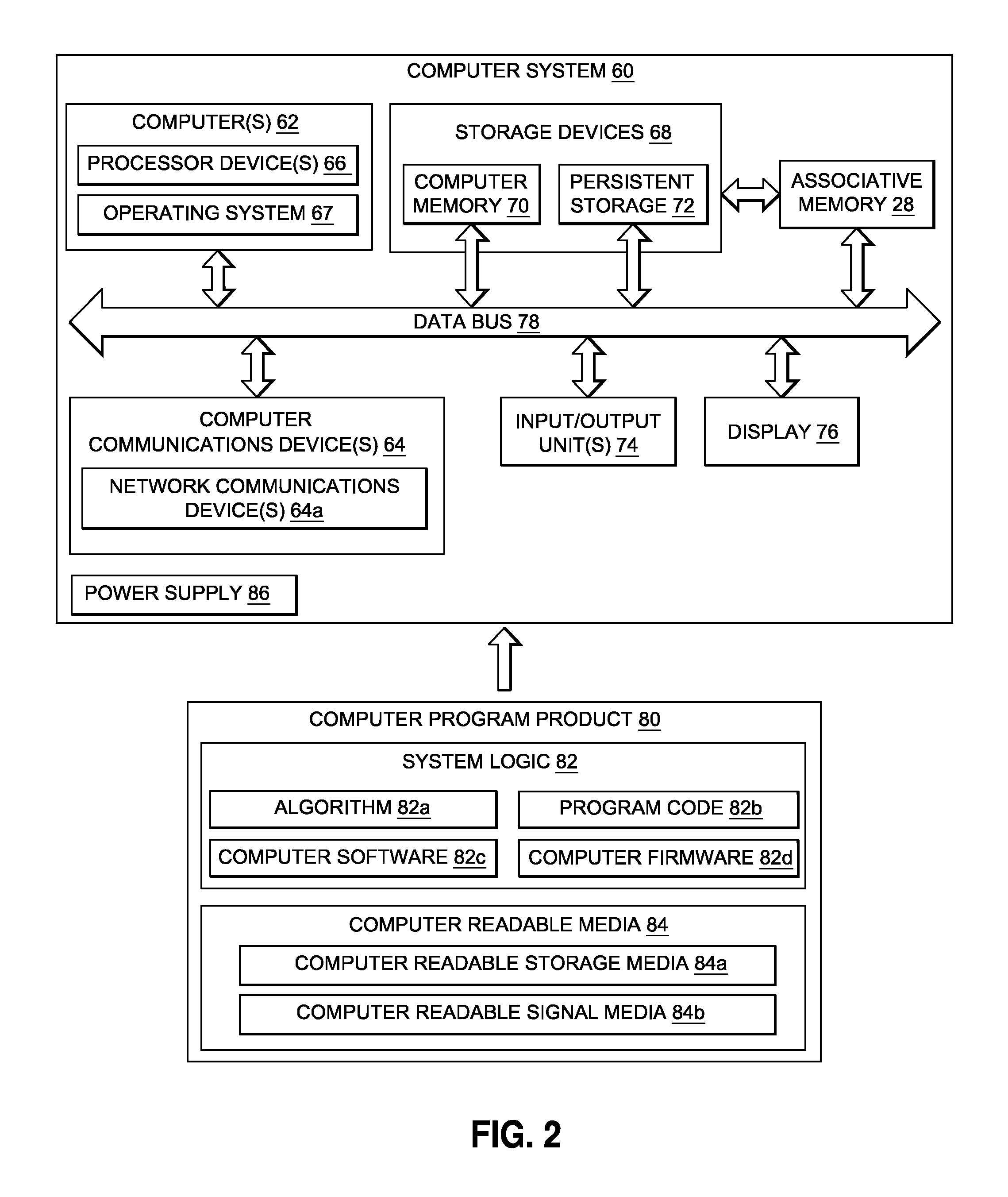Data driven classification and troubleshooting system and method
a data and troubleshooting system technology, applied in the field of machine learning data classification systems and methods, can solve the problems of increasing labor costs, increasing work time, and difficulty in identifying such text based data sets requiring accuracy-related attention that are stored among the large amount of data contained in the associative memory system, so as to improve accuracy and performance, reliable and efficient
- Summary
- Abstract
- Description
- Claims
- Application Information
AI Technical Summary
Benefits of technology
Problems solved by technology
Method used
Image
Examples
Embodiment Construction
[0055]Disclosed embodiments will now be described more fully hereinafter with reference to the accompanying drawings, in which some, but not all of the disclosed embodiments are shown. Indeed, several different embodiments may be provided and should not be construed as limited to the embodiments set forth herein. Rather, these embodiments are provided so that this disclosure will be thorough and fully convey the scope of the disclosure to those skilled in the art.
[0056]Now referring to the Figures, FIG. 1 is an illustration of a functional block diagram showing an exemplary embodiment of a computer implemented data driven classification and troubleshooting system 10 of the disclosure. As shown in FIG. 1, in one embodiment there is provided the computer implemented data driven classification and troubleshooting system 10 for troubleshooting an associative memory 28 and preferably improving accuracy 12 and performance 14 of the associative memory 28 used in the computer implemented da...
PUM
 Login to View More
Login to View More Abstract
Description
Claims
Application Information
 Login to View More
Login to View More - R&D
- Intellectual Property
- Life Sciences
- Materials
- Tech Scout
- Unparalleled Data Quality
- Higher Quality Content
- 60% Fewer Hallucinations
Browse by: Latest US Patents, China's latest patents, Technical Efficacy Thesaurus, Application Domain, Technology Topic, Popular Technical Reports.
© 2025 PatSnap. All rights reserved.Legal|Privacy policy|Modern Slavery Act Transparency Statement|Sitemap|About US| Contact US: help@patsnap.com



